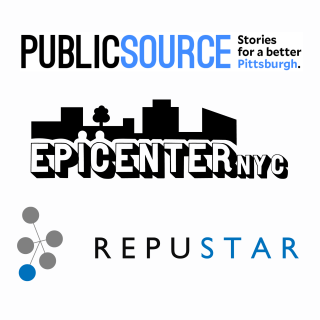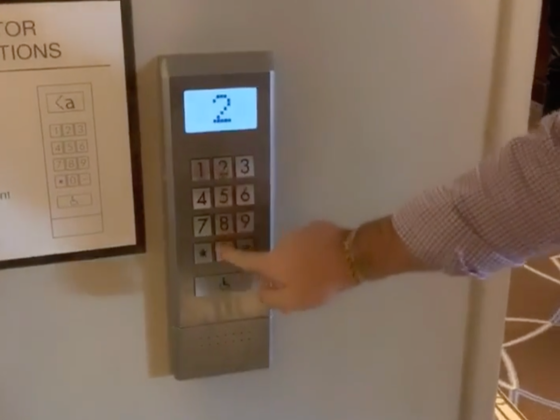A few weeks before starting college, I received an email notifying me of an outstanding balance on my student account.
When I logged in, I saw that I owed about $8,000 for my first semester of college.
I felt overwhelmed by that number. I questioned how I would even begin to pay this bill, let alone all of the loans I would owe when I graduated.
As a kid, I had never thought about attending a large college. I grew up in a lower middle-class household, and my parents hadn’t gone to college. I thought I might attend my local community college and stay close to home
I had always earned good grades, though, and relatives encouraged me to think bigger. My aunt, a middle school teacher, and uncle, a retired NASA engineer, pushed me to start looking into different colleges. Excited to go on my first college visit, I began the search.

My dad and I visited several schools, and I applied to three: the University of Akron, Kent State University and Ohio University. I got into all three, and I picked Ohio University mostly because of its highly regarded journalism program.
Without financial aid, the total bill for my first year of college would be $22,600.
At the time I hadn’t really thought about how I would pay for college and figured I would just hope for the best. I knew it wouldn’t be easy because my parents’ credit wasn’t good due to past hardships. That meant private loans were probably out of the question.
No newspaper at my high school
I became interested in journalism during my sophomore year at Berea-Midpark High School, in Berea, Ohio. Our school didn’t have a newspaper, so I joined the yearbook club. By my junior year, I became the editor and remained editor until I graduated, working to build the small staff into something larger.
During my senior year, my parents and I met with a financial aid counselor who visited our high school to help us with the application process. Once we sat down and began explaining our background and financial situation, the counselor said she couldn’t help me. When it came time to apply for financial aid from Ohio University, my parents and I hoped I would receive enough.

My mother called the university’s financial aid office for assistance. After talking to multiple people about paying my tuition, everyone said that my parents should try applying for private loans. But that was a long shot because of their poor credit.
I needed more money
I felt lost when both my high school and university did not have the resources to help me. It was astonishing, as these people specialized in assisting those in “need,” but they couldn’t address my situation. I couldn’t be the only one in this situation, but this experience made me feel like I was alone.
Finally, we found a loan through the financial aid website that my mother was able to apply for. Due to our hard work, I ended up getting an extra $4,000 in loans just a few days before I was scheduled to start class.
One week before I moved to campus, my parents and I were still struggling with how we would afford my education. My father came home from work one day and told me that I should consider going to community college because it would be cheaper.
Hearing that made me break down. I knew it was a reasonable suggestion, but it made me lose hope at a time when I was so close to moving away from home and starting the next chapter of my education.
I applied for a student job, known as a PACE position, at Ohio University. It’s supposed to provide jobs to academically qualified students who need to earn money, but I didn’t get one my first or second year of college. I still had to pay a large portion of tuition for my first year, but my aunt and uncle paid part of the cost of my education, and my parents cut back on things they needed in order to prioritize my schooling.
Sometimes we couldn’t pay the bill
Still, sometimes my parents wouldn’t be able to make payments on time, which would put my student account on hold and stop me from registering for courses. While I didn’t work at school, I made sure I worked during my winter and summer breaks at a local job or a paid internship.
Every semester, I looked at my student account and wondered if I would be able to come back to campus each year. I kept thinking there must be more students out there struggling to pay for college, and it made me wonder how many schools are not equipped to help those students.

I was frustrated that worrying about whether I could return to school every semester took away from my attention to my education.
Throughout my years at Ohio University, I have become resourceful with ways to pay for college, whether it be from scholarships or other awards, but I am still anxious about paying my loans off.
Colleges need students like me
Going into my junior year of college, I received scholarships that helped me pay for housing at my first internship and pay my tuition. The next year, I received two other scholarships that covered most of my bills.
I wish my high school and Ohio University both had the resources to help me. Students come to campus from different economic backgrounds and the university needs to help them. Students facing situations like mine should not have to worry about paying for tuition, textbooks, rent and everything else. Students need to know they are not alone in this process.
Isn’t it important to represent students from varying backgrounds on every college campus? I know the struggles of people who live paycheck to paycheck, and I bring that experience to my classes and my journalism.
I hold my university accountable when it comes to affording my education, and students of similar backgrounds need to do the same. Without this, colleges and universities will not see how diverse students’ financial backgrounds are.







You must be logged in to post a comment.